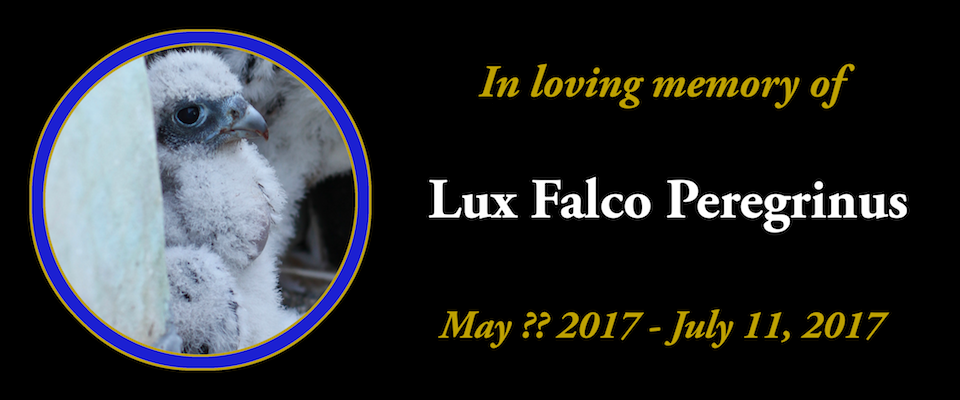When two peregrine fledglings took flight from the UC Berkeley Campanile last week, amateur bird watchers and ornithologists alike predicted a plethora of dangers: hungry crows, a steep fall, even ground predators. But there was little mention of what would ultimately lead to one chick’s foul demise—though it should have been transparent.
The baby bird’s greatest enemy? A campus window.
The late chick, named Lux by a campus Facebook survey, got trapped on the 10th floor balcony of Evans Hall. In a full-fledged attempt to fly away, she crashed into a window, sustaining fatal injuries. Yesterday evening, volunteer peregrine monitor Mary Malec was called to the scene for help, but was too late to save her.
“I hoped to find a trapped bird alive and well. I would have taken it to [rehab hospital] Lindsay Wildlife for assessment,” Malec said. “She was dead when I got there, about 15 minutes after they called me.”
Some cities have guidelines for building bird-safe buildings without large expanses of glass, says Malec, but structures on campus predate those guidelines. Evans and Stanley Hall were the only buildings Malec would have guessed to be risks—and Lux crashed into Evans. She didn’t hit the glass going into the building, but rather, when she was trying to fly out.
Malec says that it’s common for urban-nesting peregrines to fly into things.
“In [San Francisco] in some years, we lose all or most of the fledglings from building or window strikes,” Malec said. “Even adults hit buildings and window glass.”
Lux’s remains will be tested for tissue toxins by the California Department of Fish and Wildlife, according to Berkeley News Center, and then her body will be sent to Berkeley’s Museum of Vertebrate Zoology for research.
Lux is survived by her sister, Fiat. She also leaves behind her mother and father, who, unfortunately, were not chosen to be subjects of any social media naming contests.
Click here to read our story about the family’s happier days, when the feathery pair left the nest.


















